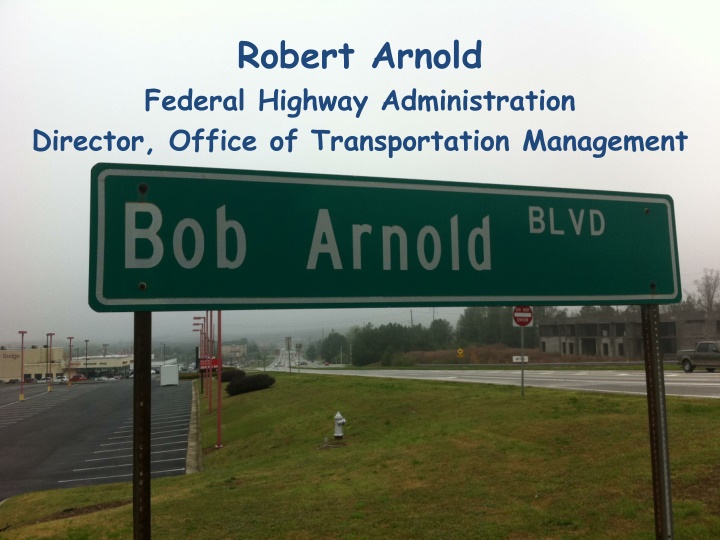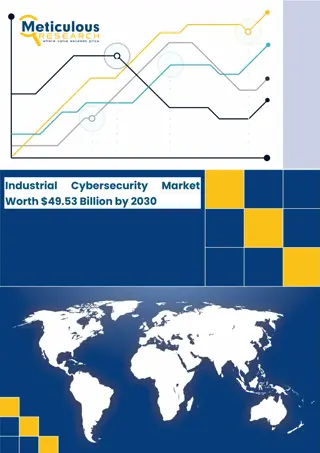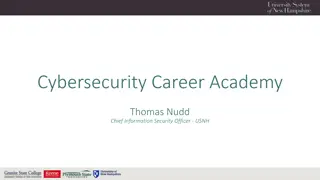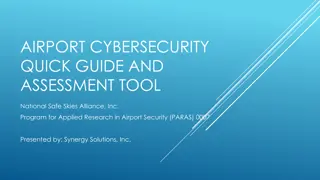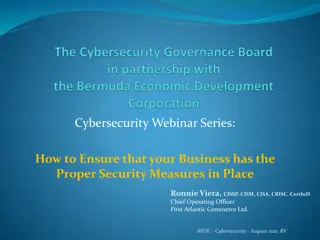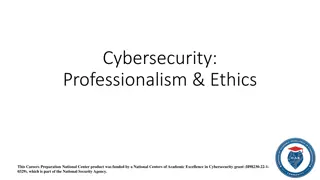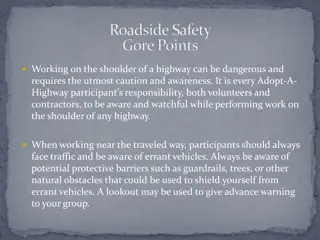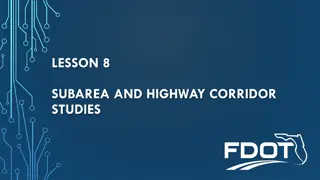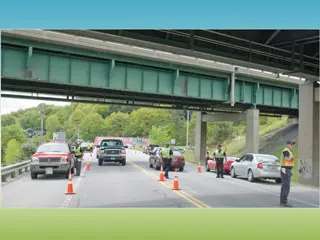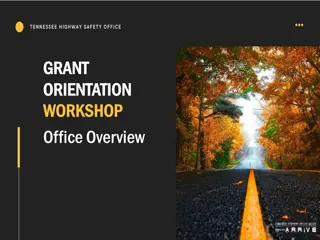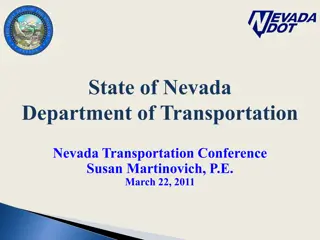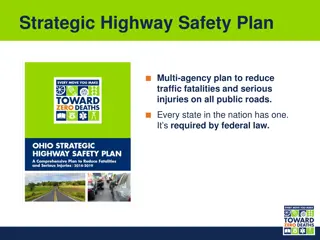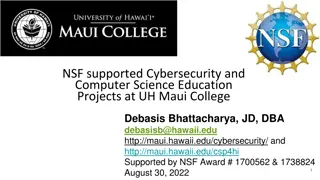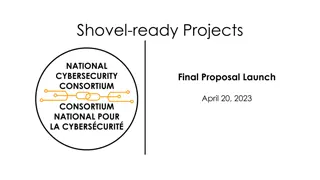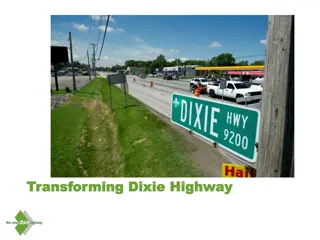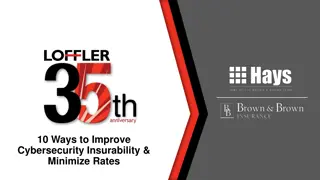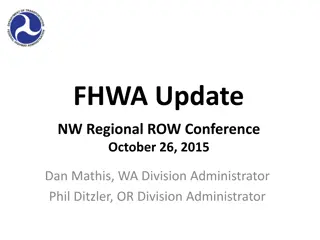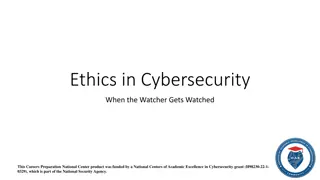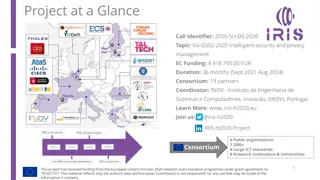Federal Highway Administration Cybersecurity Framework
Providing resource for identifying, alerting, and advising on cybersecurity incidents specific to transportation systems and infrastructure. Investigating vulnerabilities, educating, and promoting awareness to ensure system integrity.
Download Presentation

Please find below an Image/Link to download the presentation.
The content on the website is provided AS IS for your information and personal use only. It may not be sold, licensed, or shared on other websites without obtaining consent from the author.If you encounter any issues during the download, it is possible that the publisher has removed the file from their server.
You are allowed to download the files provided on this website for personal or commercial use, subject to the condition that they are used lawfully. All files are the property of their respective owners.
The content on the website is provided AS IS for your information and personal use only. It may not be sold, licensed, or shared on other websites without obtaining consent from the author.
E N D
Presentation Transcript
Robert Arnold Federal Highway Administration Director, Office of Transportation Management
Transportation Systems Cyber-Security Framework A process to Monitor Alert Advise Owner/Operators of ITS deployments
From just annoying Unlocked or easily accessed control panels with uncomplicated or unchanged default passwords. To becoming serious DMS on publicly accessible IP address with an unchanged default password
Current Proposed
Purpose Provide transportation system owners/operators a resource for: Identifying, alerting, and advising on cybersecurity incidents specific to transportation systems and infrastructure Investigating potential system vulnerabilities Education and awareness training/information
Dimensions of Threat Malicious attack Non-malicious operational error Lack of system reliability Untrustworthy practices by the operator
Governing Assumptions Make every effort to provide confidentiality of findings due to the sensitivity of: Inadvertently assisting cyber attackers through dissemination of unresolved vulnerabilities; Potential of shutting down information gathering within the ITS and owner/operator community due to receiving unfavorable and critical reports from media sources; and Work with existing organizations internal to the transportation industry and externally with the cybersecurity and ICS communities.
Organizational Platform Multi-organizational cyber security workgroup Federal, State, and local / public & private sector Use the National Operations Center for Excellence for: reporting and alert function information and expert advice gateway, and education/awareness portal.
Functions Monitoring - Provide stakeholders a secure method to notify the CS WG of events, incidents, or vulnerabilities without exposing observed or suspected activities to the public. There are two reasons to have this more limited communication verses a list serve or other more public discussion forums; 1) assure confidentiality of the owner/operator who s system was attacked and 2) avoid exposing unresolved vulnerabilities. Regularly monitor other sources such as Homeland Security s ICS-CERT and MS-ISAC for attacks and advisory alerts. Provide these same resources with findings as appropriate while not violating confidentiality & exposure principles. Alert - Develop an alert network of system owners, operating professionals, manufactures, and oversight/stewardship agencies (i.e. FHWA Divisions). This would be for quick reaction to on-going events and providing initial remedial advice. This might include directions on how to handle and distribute this information (e.g. confidential, general dissemination, etc.). Advisory - Form expert sub-teams to develop/disseminate advice and solutions to attacks/threats, identify and manage needed research, and develop education and awareness products for stakeholder groups. Coordinate with other appropriate non- transportation specific organizations (ICS-CERT, MS-ISAC, DHS, etc.).
Beyond Roadway ITS Tolling Transit Communication Freight Size & Weight inspection Border Crossing Inspection Connected Vehicles
Membership:Primary and secondary contacts/resources Federal Highway Administration (FHWA) FHWA Division Offices Other USDOT Modes (FTA, FRA, FMCSA, etc.) USDOT Cyber Security Action Team (Subgroup of the USDOT s Safety Council) Industrial Control System Computer Emergency Response Team (ICS-CERT) U.S. Department of Homeland Security / Federal Bureau of Investigation AASHTO State DOT s Toll Authorities Multi-State Information Sharing and Analysis Center (MS-ISAC) NACTO City DOT s Department of Public Works ITE Transportation Professionals Standards Development Organization ITSA Equipment manufacturers Academia / Researchers NEMA Equipment manufacturers Standards Development Organization Transportation Research Board (TRB) Committee on Critical Transportation Infrastructure Protection
Way Forward Actions Core organizations brief leadership and obtain by-in (AASHTO, ITE, ITSA, NEMA, FHWA) Coordination with USDOT Cyber Security Action Team and other USDOT modes (FHWA) Outreach to potential membership (AASHTO, ITE, ITSA, NEMA, FHWA) Coordinate with NOCoE (AASHTO, FHWA) Draft multi-organizational agreement/governance (AASHTO, ITE, ITSA, NEMA, FHWA) Timeline Core organizations confirm commitment to move forward Jan 2015 Associated membership outreach effort Jan/Feb 2015 Charter/agreement/governance/responsibilities developed & in place Feb/March 2015 Advisory/Alert system activated March 2015 Research roadmap established April 2015 Awareness and Education activities defined April 2015
